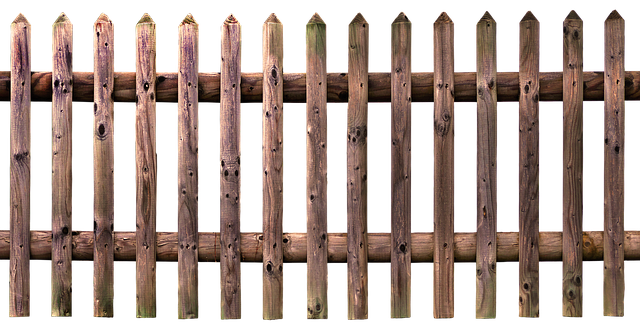New Bedford, Massachusetts residents looking to enhance their outdoor spaces have a unique opportunity with custom fence design and installation. This comprehensive guide explores the art of crafting fences that not only serve as functional boundaries but also become striking architectural elements. From material choices like wood and metal to design inspiration spanning classic to modern styles, we delve into every step of the process, including local regulations, ensuring your new fence adds value and allure to your property.
- Custom Fence Design: Unlocking Unique Aesthetics
- Installation Process: Step-by-Step Guide for New Bedford Residents
- Material Choices: Wood, Metal, and More for Your Fence
- Enhancing Property Value: The Impact of Custom Fences
- Design Inspiration: From Classic to Modern Styles
- Local Regulations: Permits and Compliance for Your Fence
Custom Fence Design: Unlocking Unique Aesthetics
Custom fence design offers homeowners and businesses in New Bedford, Massachusetts, an opportunity to transform their outdoor spaces into visually stunning and unique landscapes. By collaborating with expert designers and artisans, you can create a fence that reflects your personal style and enhances the overall aesthetics of your property. From intricate patterns and elaborate motifs to natural materials and contemporary lines, the possibilities are endless.
Whether you envision a traditional wooden fence with elegant curves or a modern metal structure featuring geometric shapes, custom design allows for customization down to the smallest detail. Incorporating elements like decorative panels, arbors, or even lighting can elevate your fence from a functional barrier to an eye-catching focal point. Imagine a cozy backyard retreat framed by a bespoke fence that tells a story of your taste and creativity.
Installation Process: Step-by-Step Guide for New Bedford Residents
The installation process for a custom fence begins with measuring and planning. New Bedford residents should start by assessing their property lines and deciding on the desired fence style, material, and height. Next, create detailed plans or sketches to visualize the final product. It’s crucial to check local building codes and obtain any necessary permits before beginning construction.
Digging holes for posts is a significant step, ensuring they are deep enough to provide stability. Install the posts, then attach the fence panels or rails according to the design. Regularly double-check measurements throughout to maintain precision. Once all components are secure, fill in any gaps with suitable materials and finish by applying any required coatings or paints for durability and aesthetic appeal.
Material Choices: Wood, Metal, and More for Your Fence
When designing your custom fence, one of the first considerations is choosing the right material. Traditional and timeless options like wood offer a natural aesthetic appealing to many homeowners in New Bedford. Various types of wood—from cedar to pressure-treated pine—each have unique properties, with some being more resistant to rot and insects than others.
Beyond wood, metal fences are gaining popularity for their durability and low maintenance requirements. Steel and aluminum are common choices, providing a robust structure that can withstand harsh weather conditions. Additionally, modern fencing materials like vinyl offer a cost-effective alternative known for its longevity and ease of cleaning. Each material has distinct visual characteristics, allowing you to select one that aligns with your preferred style and enhances the overall curb appeal of your Massachusetts property.
Enhancing Property Value: The Impact of Custom Fences
A custom fence isn’t just about security or defining property lines; it’s an investment in your home’s value. In New Bedford, Massachusetts, where real estate can vary greatly, a well-designed and installed fence can make a significant difference. It acts as a visual upgrade, enhancing curb appeal and creating a first impression that reflects the unique character of your residence.
Consider a custom fence not just as a barrier but as an extension of your home’s architecture. Materials like wood, vinyl, or iron can be meticulously crafted to complement existing structures, gardens, or landscapes. This attention to detail doesn’t go unnoticed by potential buyers; it adds to the overall allure and desirability of your property, potentially increasing its market value in the long run.
Design Inspiration: From Classic to Modern Styles
When it comes to custom fence design, New Bedford residents have an array of inspirations to choose from. Classic styles like traditional picket fences or elegant wooden rails offer timeless charm and a touch of nostalgia. For those seeking something more contemporary, modern designs with clean lines, geometric patterns, and innovative materials can create a striking and unique outdoor aesthetic.
From the classic to the modern, design possibilities are endless. Natural elements such as organic shapes and flowing lines inspired by nature can blend seamlessly into the surrounding landscape. Or, for a bold statement, consider geometric patterns that add visual interest and contemporary flair. Whether it’s a cozy backyard retreat or a grand entranceway, custom fence installation in New Bedford allows you to express your personal style while enhancing the beauty and security of your outdoor space.
Local Regulations: Permits and Compliance for Your Fence
Before initiating your custom fence project, it’s imperative to familiarize yourself with New Bedford’s local regulations, which often involve permits and compliance guidelines. These rules are in place to ensure harmony within the community and maintain specific aesthetic standards. Therefore, understanding the permit requirements is a crucial step in the process.
The first step typically involves contacting the local building department or planning board to inquire about fencing regulations. They can provide you with detailed information on permitted fence types, heights, materials, and locations. Failure to comply with these regulations could result in delays or even legal issues during or after your installation.
